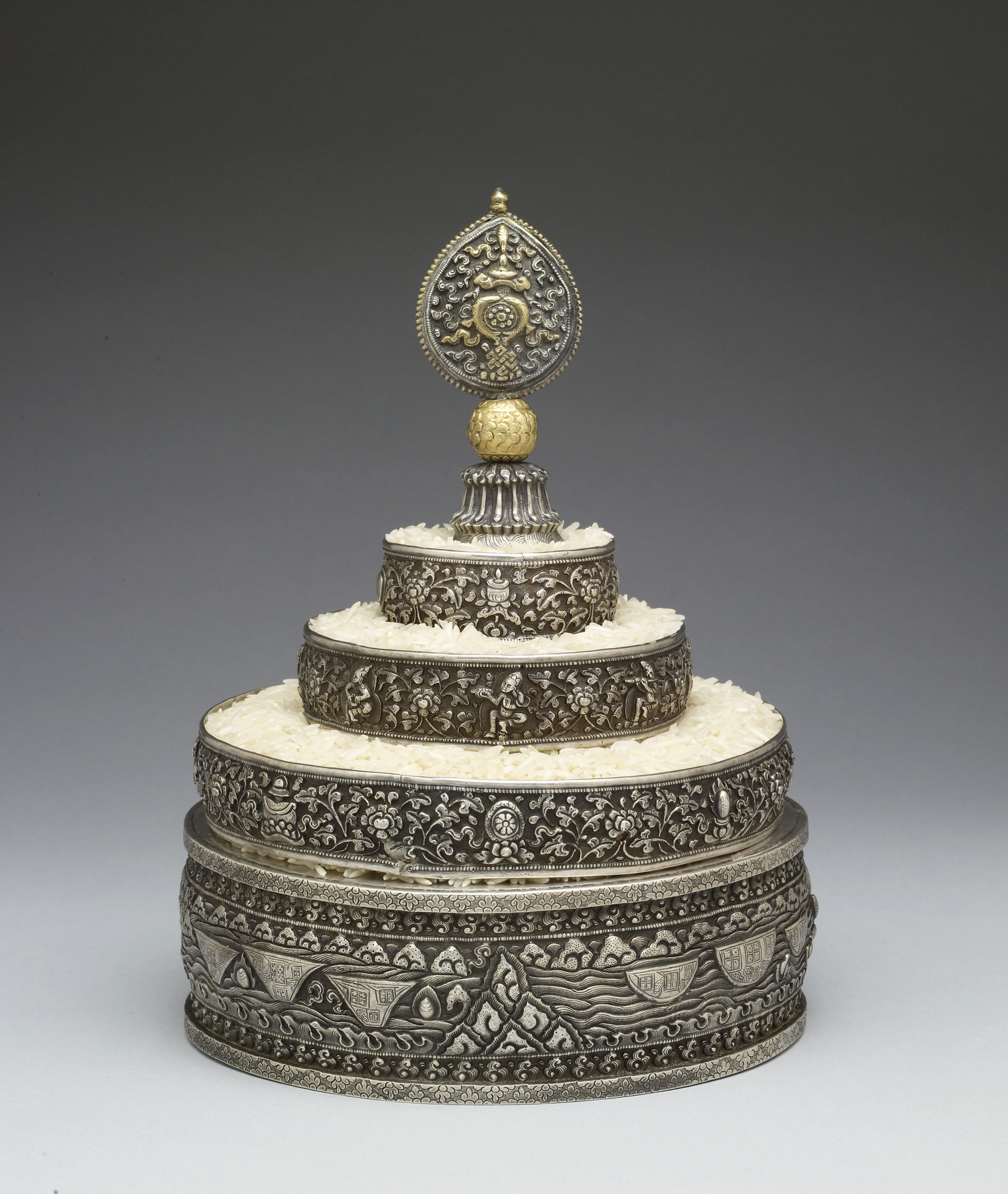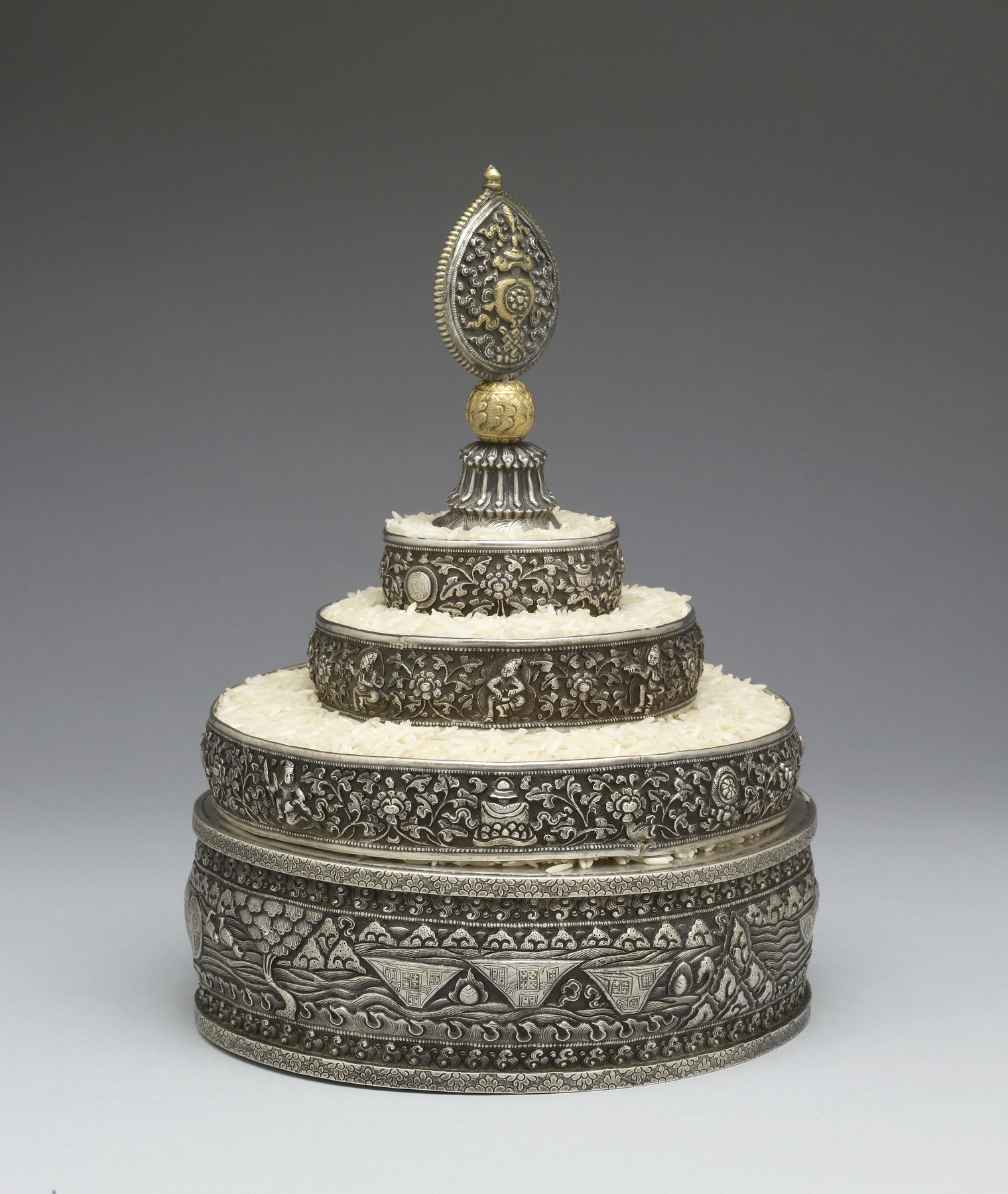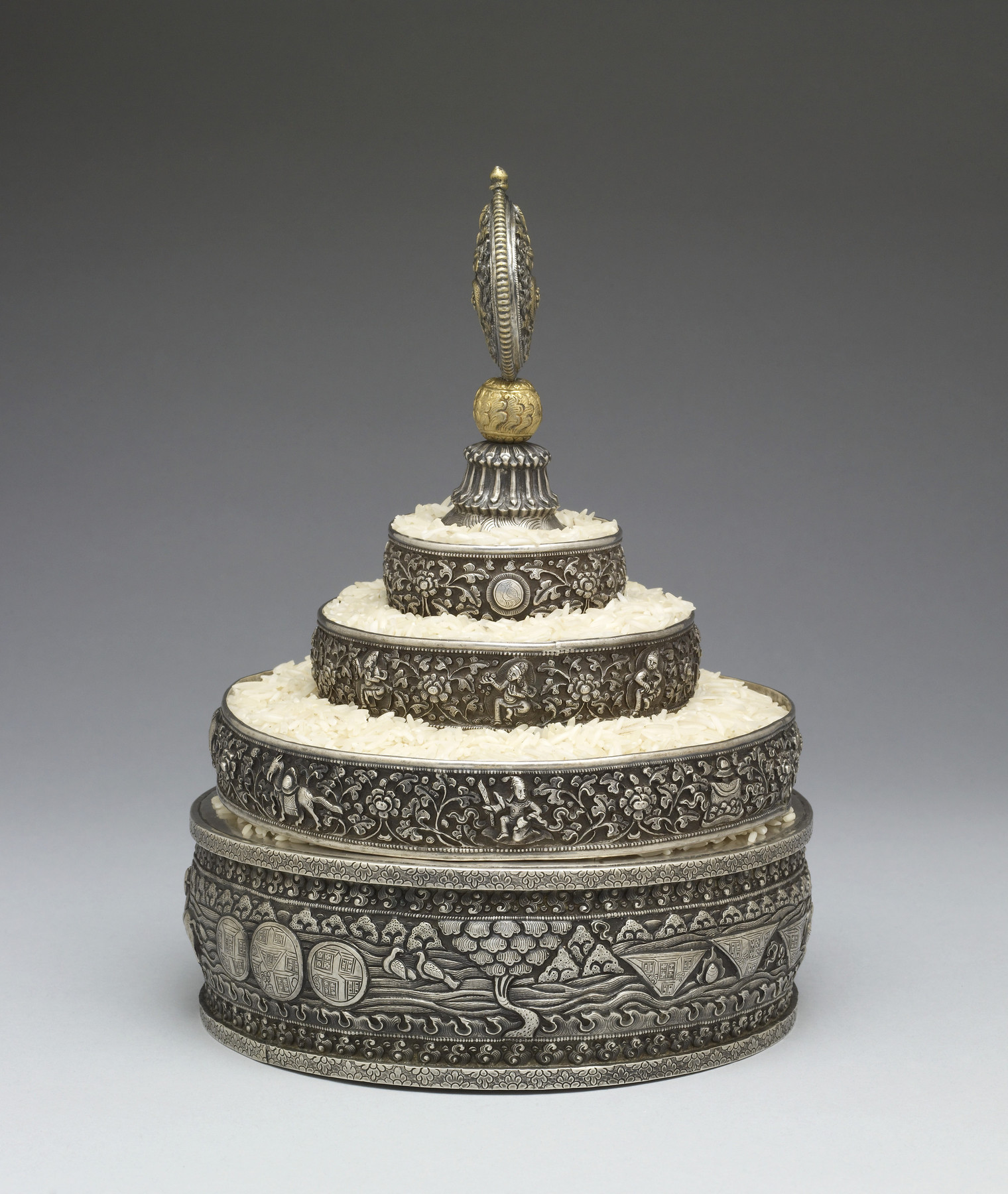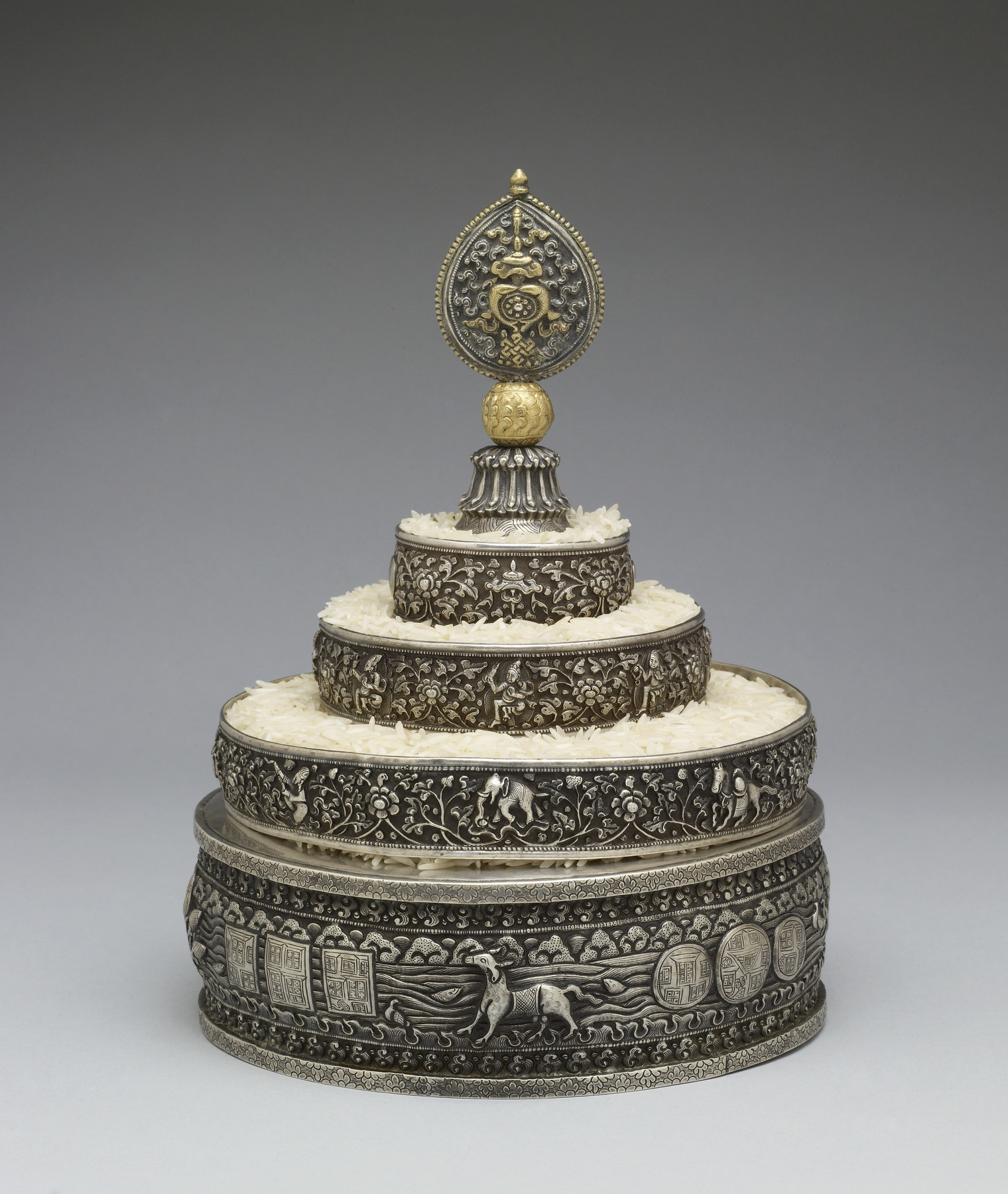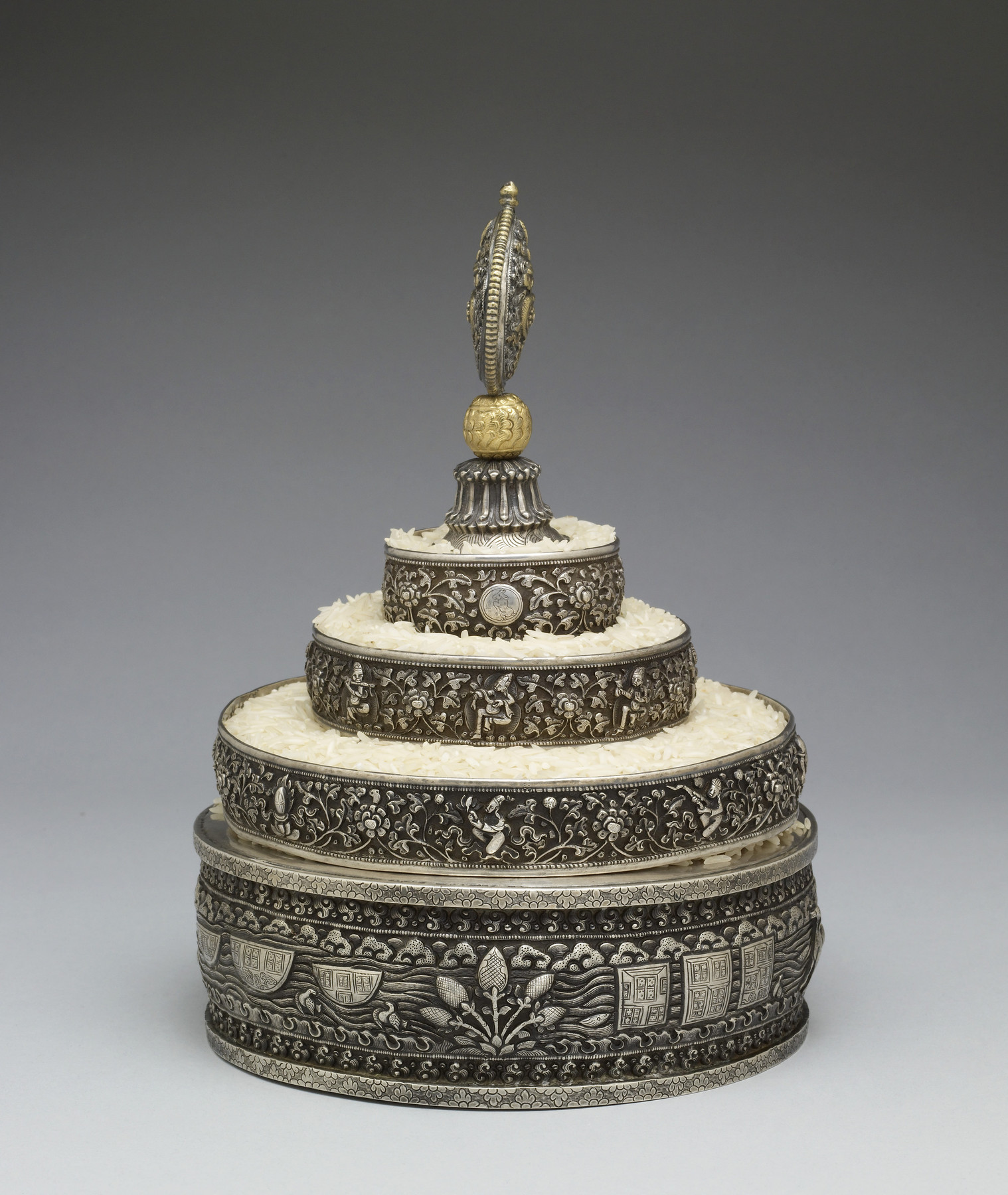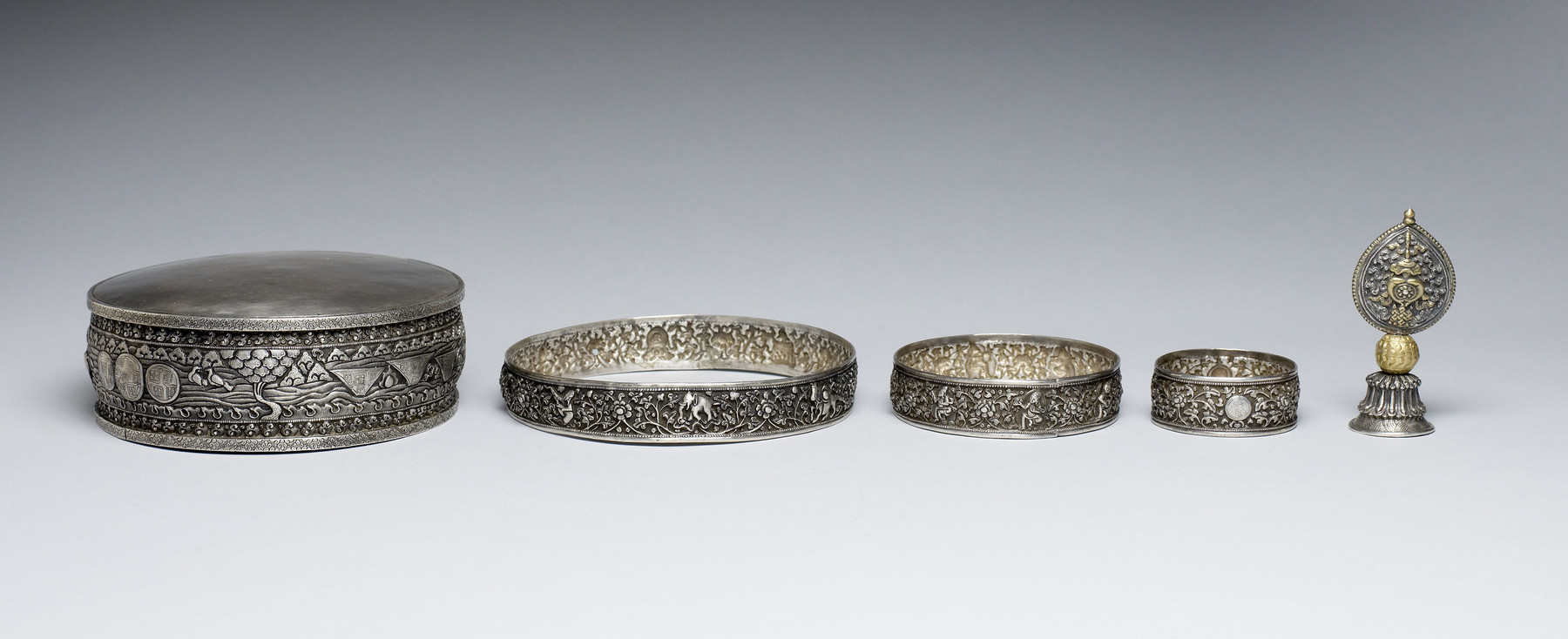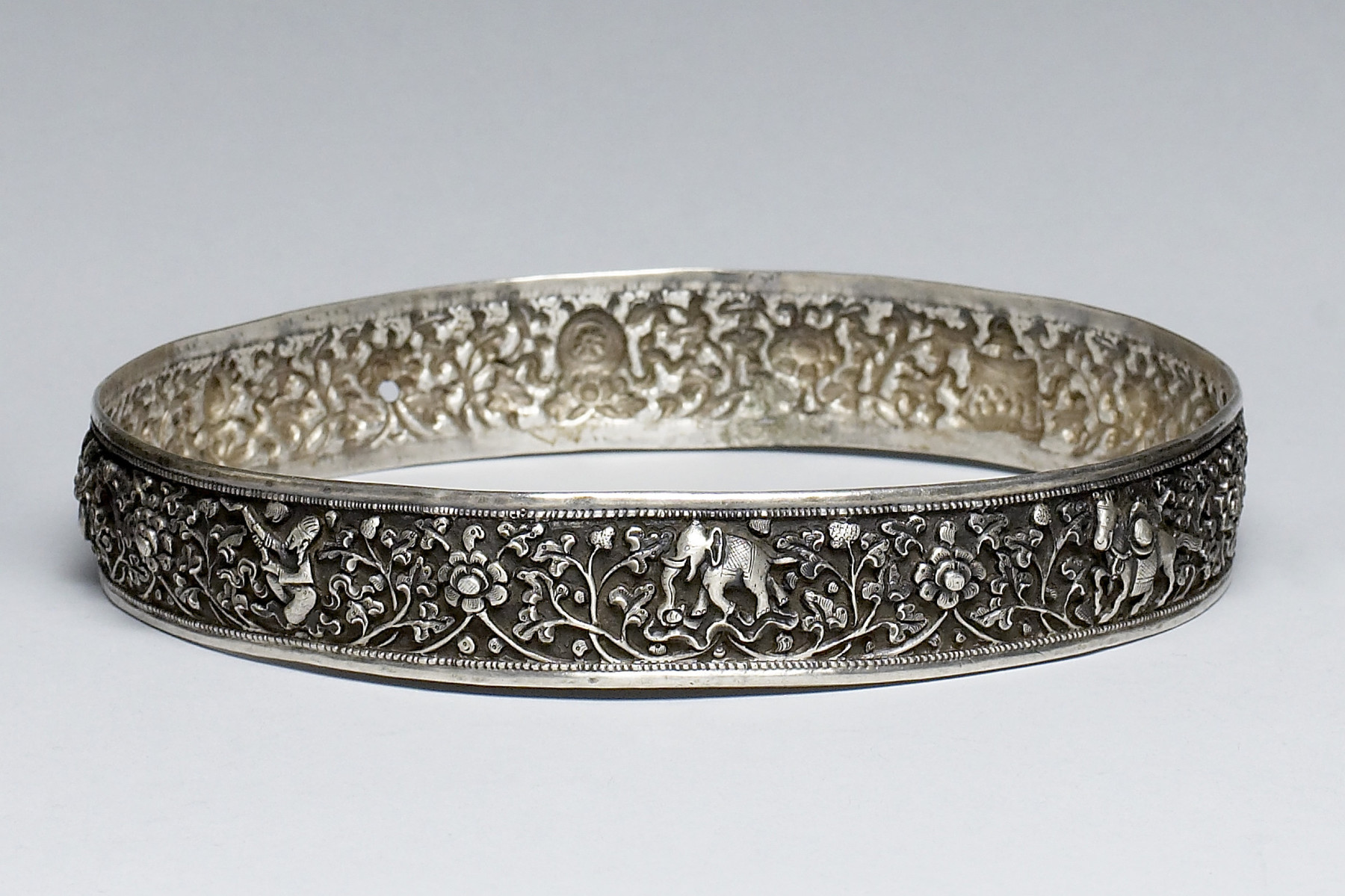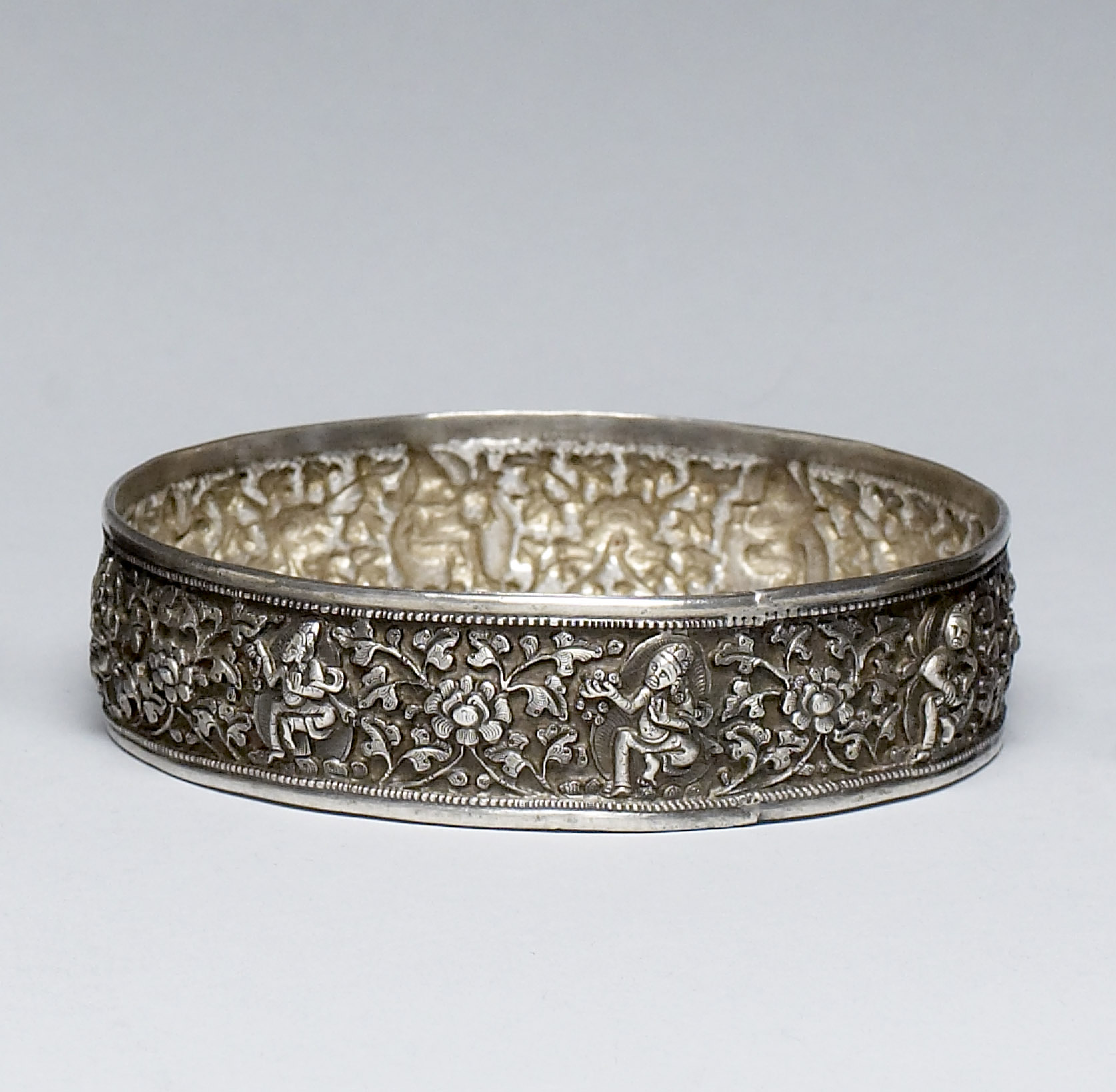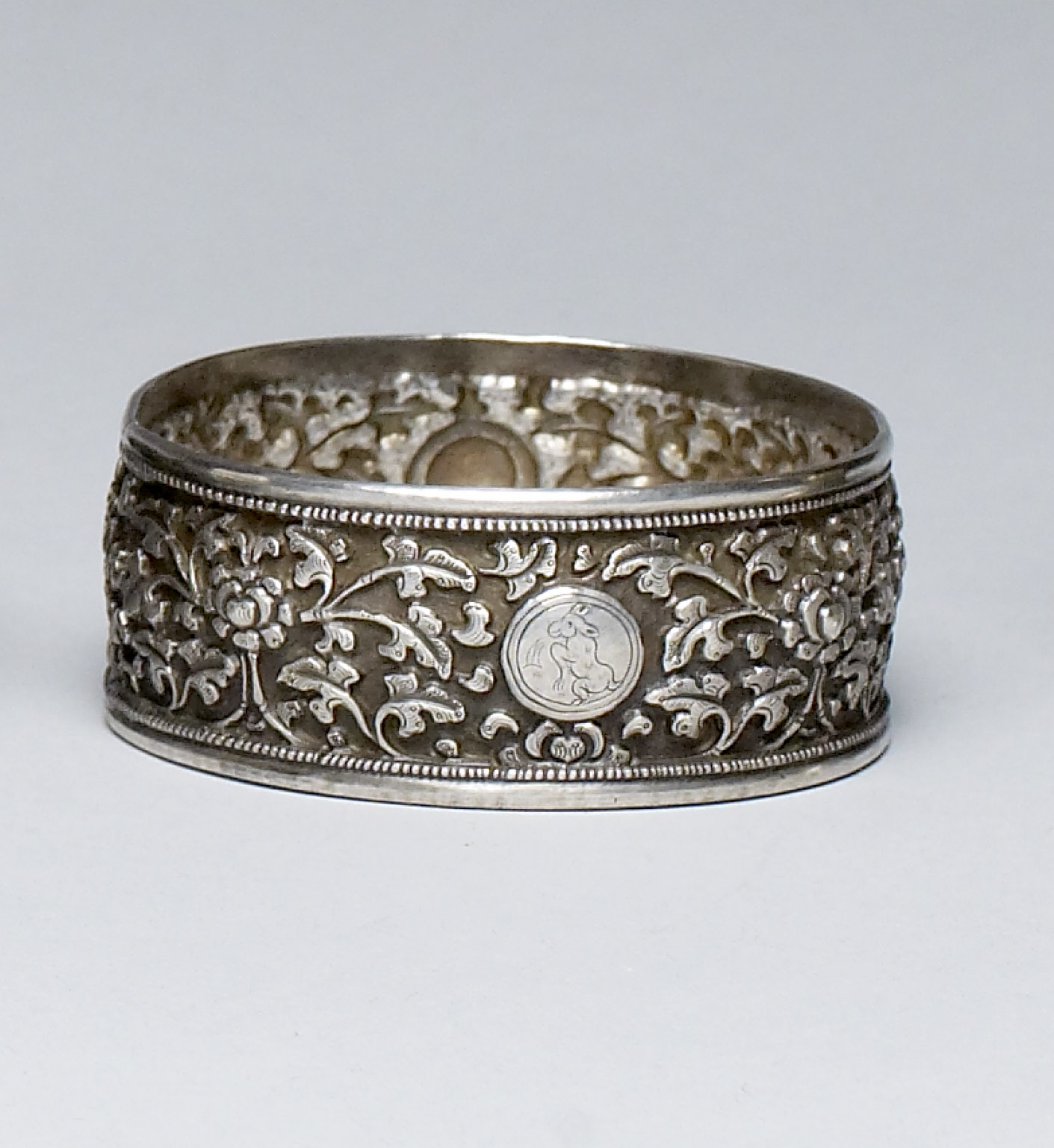Grain Mandala Set
(India, Nepal, and Tibet)
This grain mandala set consists of five silver repoussé components, which when stacked together with quantities of a small, valued particle—such as rice, barley, or other grains or pulses; powdered medicinal herbs or pills; or gemstones, pearls, or coins—collectively symbolize the offering of the entire universe, in the Buddhist ritual known as the mandala offering. Together, the imagery of the base, three rings, and finial represents Mount Meru—the axis mundi in Buddhist cosmology—and its surrounding universe, filled with the auspicious items being ritually offered.
On the base, which has a solid top, are the four continents and their associated eight subcontinents, represented in four groups of three according to their respective shapes: square, semicircular, triangular, and circular. Here, they are filled with images of windows. They sit in the waves of the great ocean, which is surrounded by the iron mountain ring. Between the groups of continents and subcontinents are the four sources of endless wealth: the jewel mountain, the wish-granting tree, the wish-fulfilling cow, and the uncultivated harvest, which regenerates itself.
The first open ring features the seven emblems of royalty, along with the vase of endless treasure. The emblems of royalty, also described as the seven precious possessions of the universal monarch ("chakravartin"), are the precious wheel, jewel, queen, minister, elephant, horse, and general. The next ring depicts the eight offering goddesses, many of whom hold items associated with their respective identities. Symbolizing items that feature in devotional practice, they are the goddesses of beauty, garlands, song, dance, flowers, incense, light, and perfume. The smallest ring bears images of the sun (marked by a rooster), moon (marked by a rabbit), precious parasol, and victory banner. The finial, which symbolizes Mount Meru, features auspicious symbols, including the endless knot, the pair of golden fish, the wheel of the Buddhist teachings ("dharmachakra"), and the parasol.
Provenance
Provenance (from the French provenir, 'to come from/forth') is the chronology of the ownership, custody, or location of a historical object. Learn more about provenance at the Walters.
Purchased by Walter Hauser [1], Charlottesville, Virginia, 1963-64; given to Walters Art Museum, 2016.
[1] Purchased at a public sale for Tibetan children's relief in New Delhi
Conservation
| Date | Description | Narrative |
|---|---|---|
| 7/21/2016 | Examination | Examined for accession. |
Geographies
Tibet (Place of Origin)
Measurements
Approx. H when fully assembled: 7 3/4 in. (19.69 cm); H of base: 2 1/8 × Diam: 6 5/16 in. (5.44 × 16.03 cm); H largest ring: 15/16 × Diam: 5 13/16 in. (2.4 × 14.76 cm); H of middle ring: 15/16 × Diam: 4 in. (2.4 × 10.16 cm); H of top ring: 15/16 × Diam: 2 7/16 in. (2.4 × 6.19 cm); H of finial: 3 9/16 × W: 1 9/16 × D: 1 3/8 in. (9.05 × 4 × 3.49 cm)
Credit Line
Gift of Walter Hauser, 2016
Location in Museum
Not on view
Accession Number
In libraries, galleries, museums, and archives, an accession number is a unique identifier assigned to each object in the collection.
In libraries, galleries, museums, and archives, an accession number is a unique identifier assigned to each object in the collection.
57.2334

